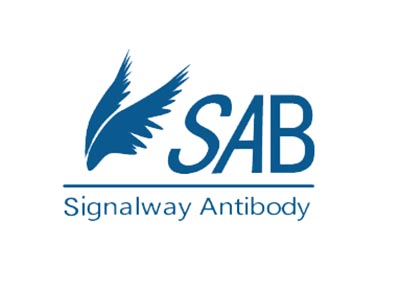Product Detail
Product NameHCV-NS3 Antibody HRP Conjugated
Host SpeciesRabbit
ClonalityPolyclonal
IsotypeIgG
PurificationPurified by Protein A.
ApplicationsWB IHC-P IHC-F
Species ReactivityHu Ms Rt
Immunogen DescKLH conjugated synthetic peptide aa 1400-1550 3010 derived from human HCV-NS3
Target NameHCV-NS3
ConjugateHRP
Excitation EmissionN A
Other NamesSerine protease NS3; Hepacivirin; NS3P; POLG_HCVBK.
Accession NoSwiss-Prot#Q9WMX2
Uniprot
Q9WMX2
Concentration1mg ml
Formulation0.01M TBS(pH7.4) with 1% BSA, 0.03% Proclin300 and 50% Glycerol.
StorageShipped at 4˚C. Store at -20˚C for one year. Avoid repeated freeze/thaw cycles.
Application Details
WB=1:500-2000 IHC-P=1:50-200 IHC-F=1:50-200
Core protein packages viral RNA to form a viral nucleocapsid, and promotes virion budding. Modulates viral translation initiation by interacting with HCV IRES and 40S ribosomal subunit. Also regulates many host cellular functions such as signaling pathways and apoptosis. Prevents the establishment of cellular antiviral state by blocking the interferon-alpha beta (IFN-alpha beta) and IFN-gamma signaling pathways and by inducing human STAT1 degradation. Plays an important role in virus-mediated cell transformation leading to hepatocellular carcinomas. Interacts with, and activates STAT3 leading to cellular transformation. May repress the promoter of p53, and sequester CREB3 and SP110 isoform3 Sp110b in the cytoplasm. Also represses cell cycle negative regulating factor CDKN1A, thereby interrupting an important check point of normal cell cycle regulation. Targets transcription factors involved in the regulation of inflammatory responses and in the immune response: suppresses NK-kappaB activation, and activates AP-1. Mediates apoptotic pathways throught association with TNF-type receptors TNFRSF1A and LTBR, although its effect on death receptors-induced apoptosis remains controvertial. Enhances TRAIL mediated apoptosis, suggesting that it might play a role in mediated apoptosis, suggesting that it might play a role in immune-mediated liver cell injury. Secreted core protein is able to bind C1QR1 at the T-cell surface, resulting in down-regulation of T-lymphocytes proliferation. May transactivate human MYC, Rous sarcoma virus LTR, and SV40 promoters. May suppress the human FOS and HIV-1 LTR activity. May alter lipid metabolism by interacting with hepatocellular proteins involved in lipid accumulation and storage.
If you have published an article using product C00158H, please notify us so that we can cite your literature.



 15 business days.
15 business days.



